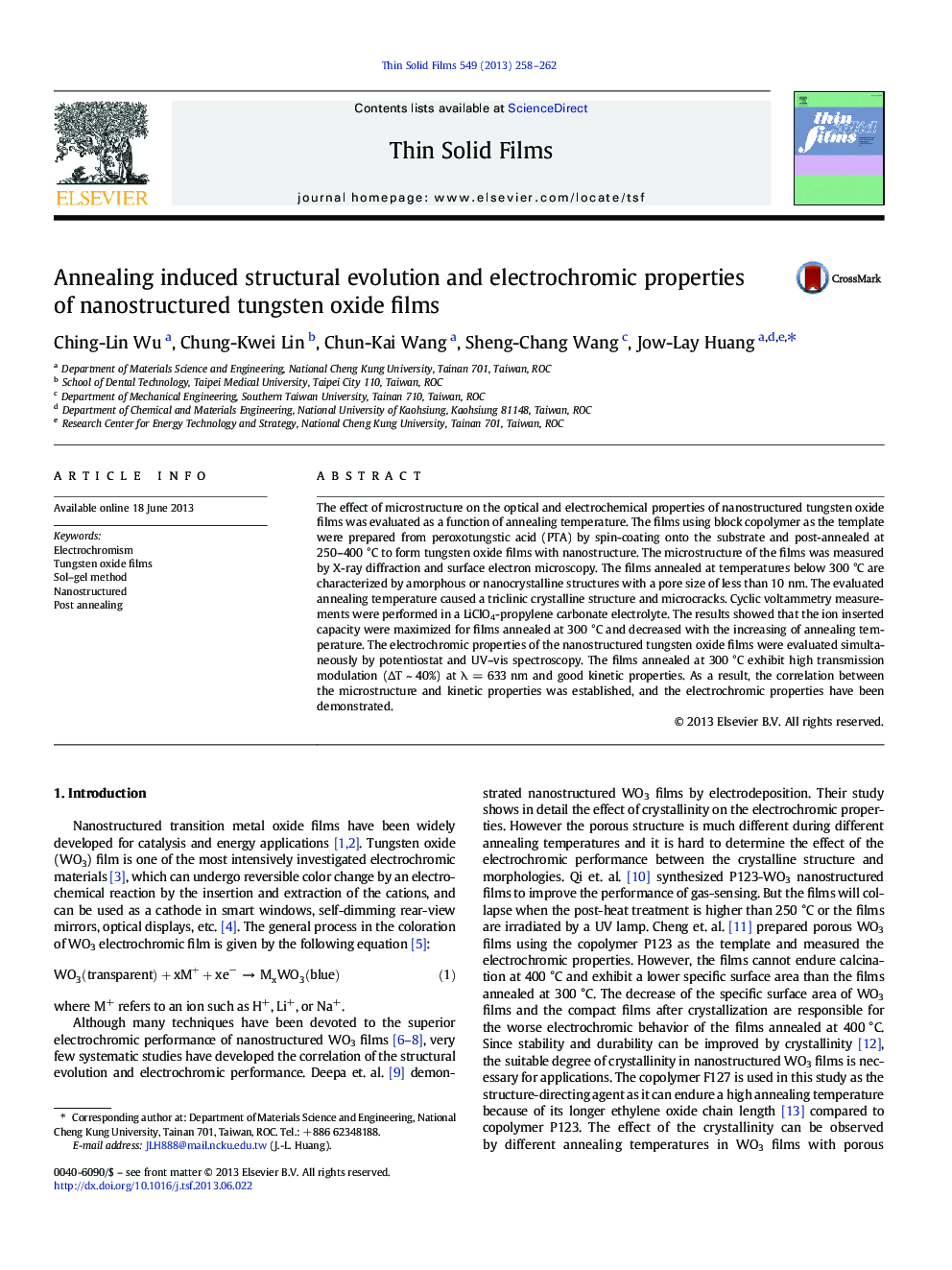| Article ID | Journal | Published Year | Pages | File Type |
|---|---|---|---|---|
| 1665759 | Thin Solid Films | 2013 | 5 Pages |
•Surfactant-assisted WO3 films have been prepared by sol–gel method.•Nanostructure of porous WO3 film is retained after crystallization.•Kinetic properties of WO3 can be improved by nanostructure and crystallinity.
The effect of microstructure on the optical and electrochemical properties of nanostructured tungsten oxide films was evaluated as a function of annealing temperature. The films using block copolymer as the template were prepared from peroxotungstic acid (PTA) by spin-coating onto the substrate and post-annealed at 250–400 °C to form tungsten oxide films with nanostructure. The microstructure of the films was measured by X-ray diffraction and surface electron microscopy. The films annealed at temperatures below 300 °C are characterized by amorphous or nanocrystalline structures with a pore size of less than 10 nm. The evaluated annealing temperature caused a triclinic crystalline structure and microcracks. Cyclic voltammetry measurements were performed in a LiClO4-propylene carbonate electrolyte. The results showed that the ion inserted capacity were maximized for films annealed at 300 °C and decreased with the increasing of annealing temperature. The electrochromic properties of the nanostructured tungsten oxide films were evaluated simultaneously by potentiostat and UV–vis spectroscopy. The films annealed at 300 °C exhibit high transmission modulation (∆T ~ 40%) at λ = 633 nm and good kinetic properties. As a result, the correlation between the microstructure and kinetic properties was established, and the electrochromic properties have been demonstrated.
